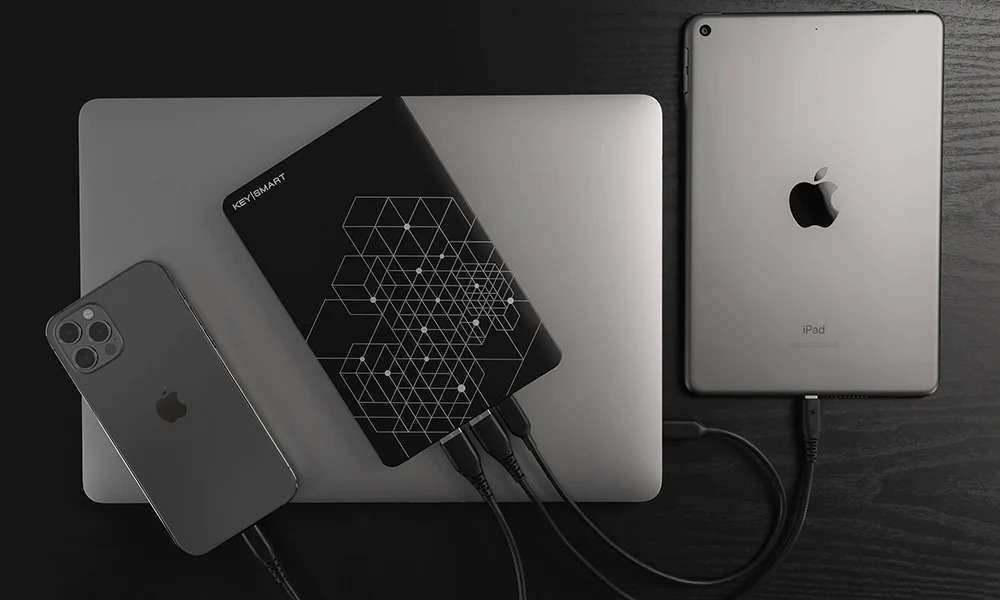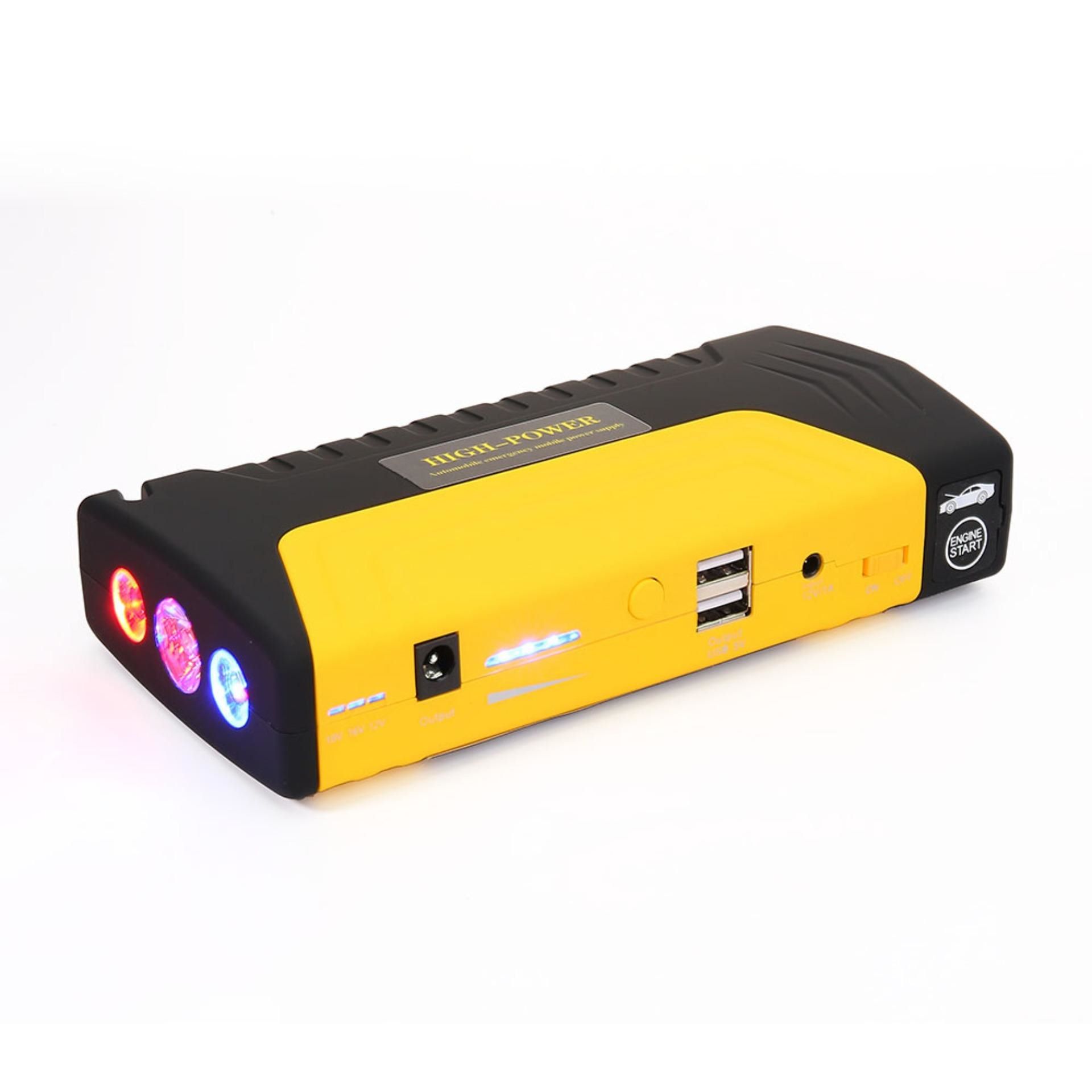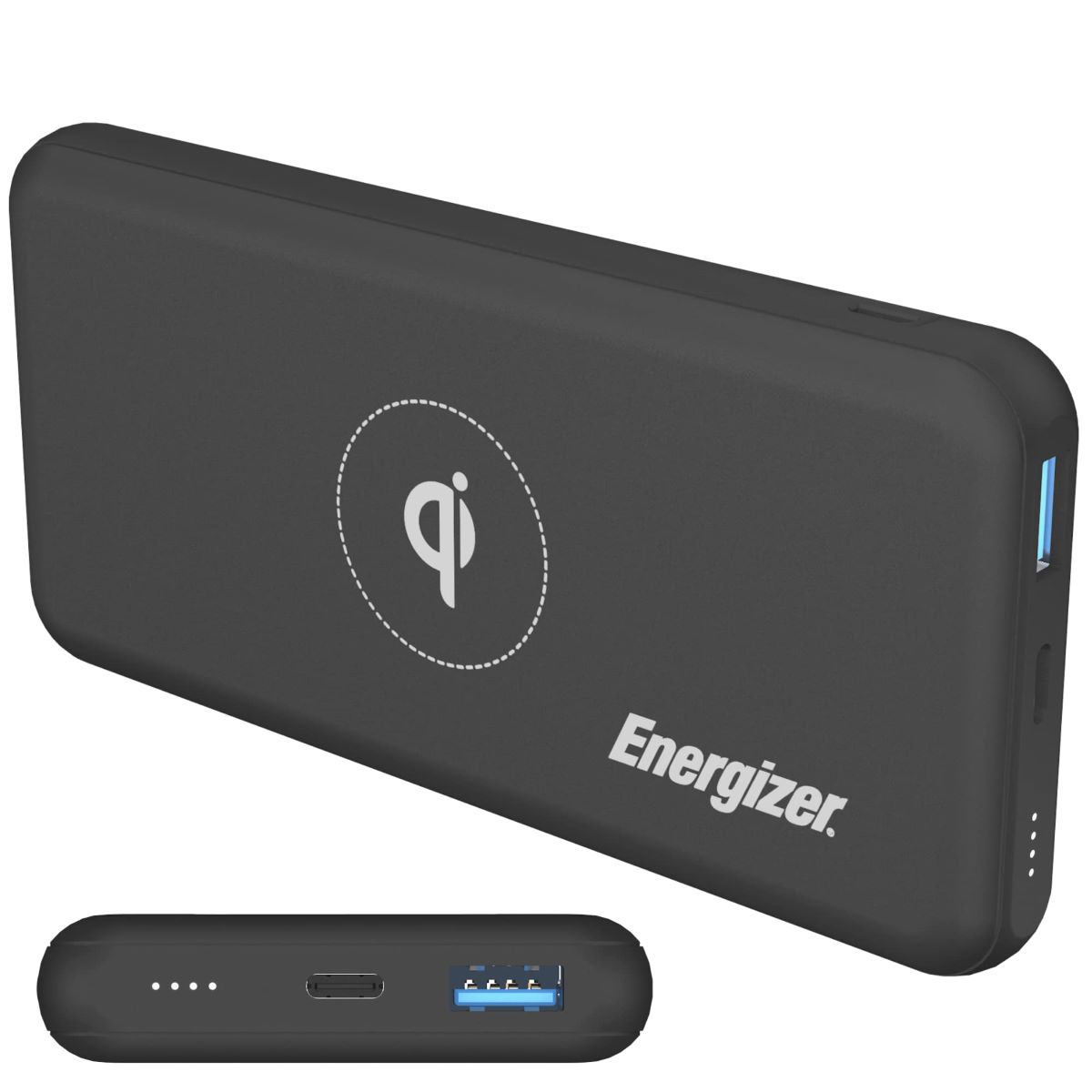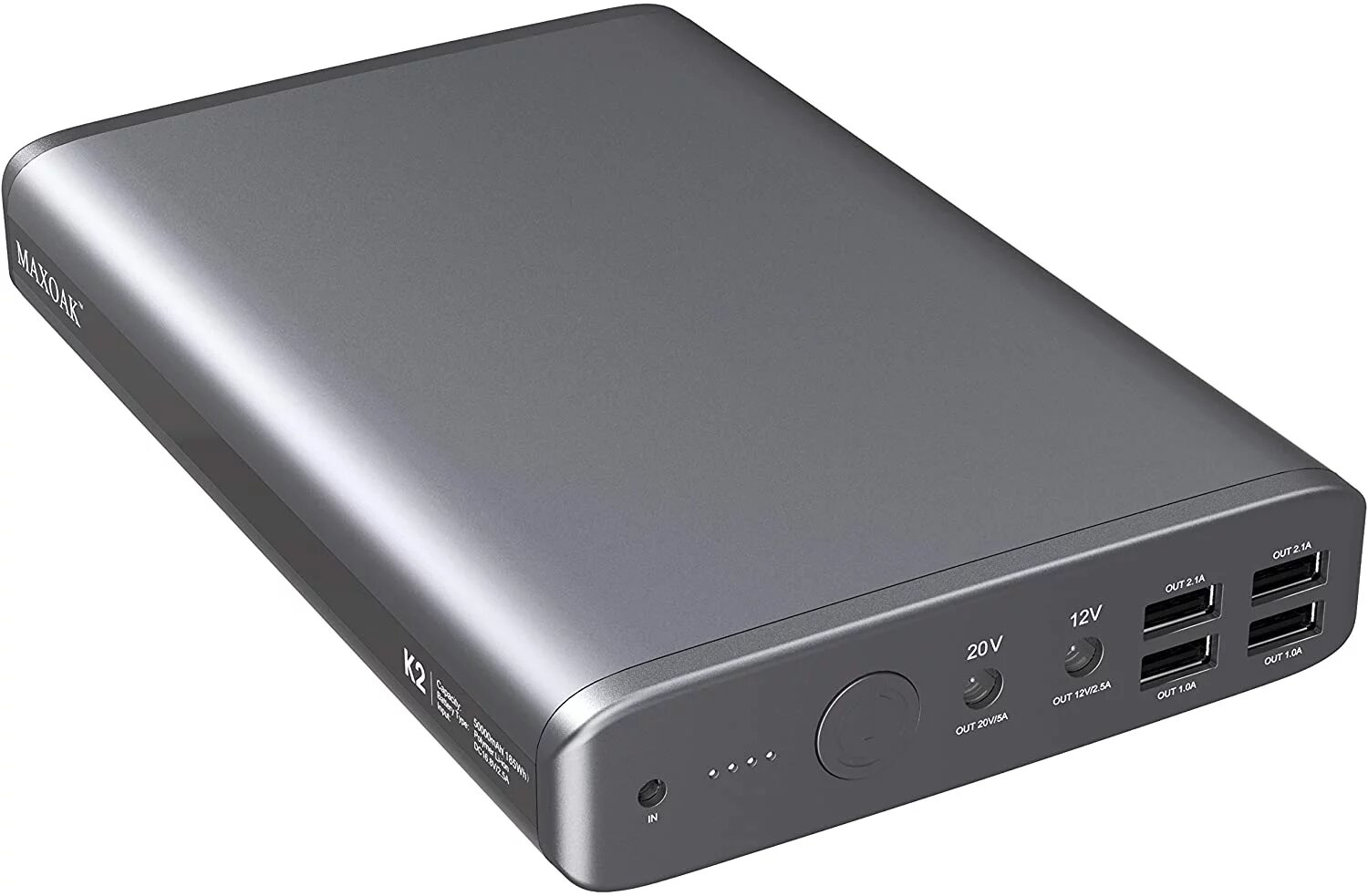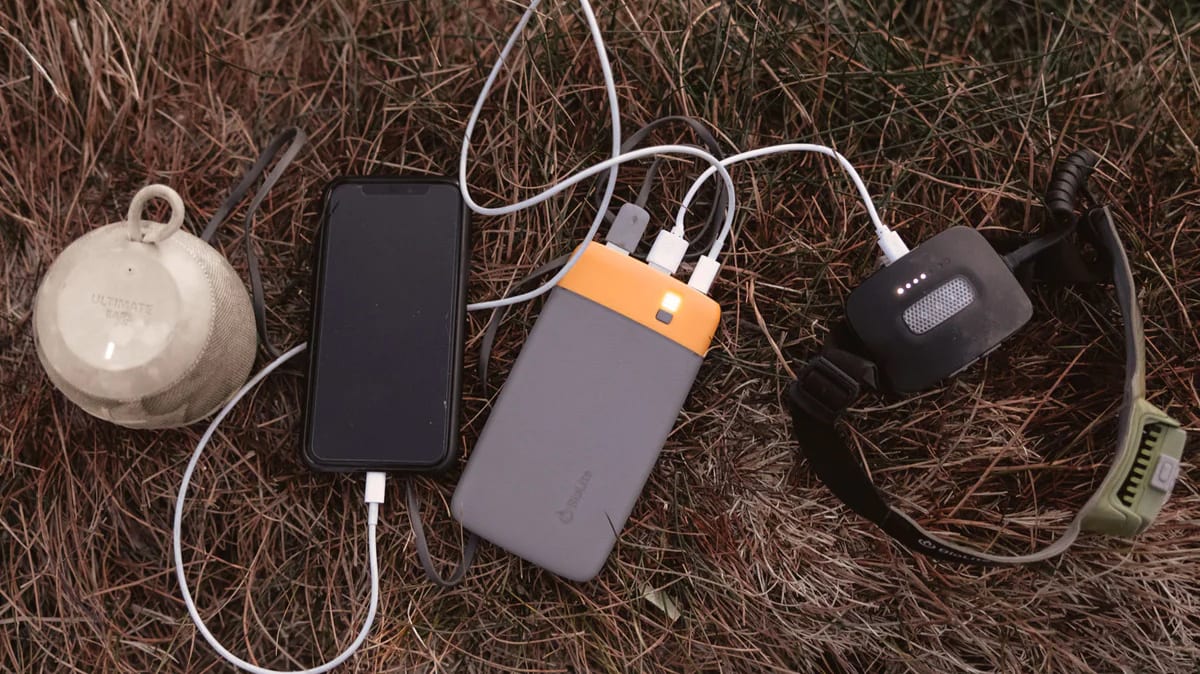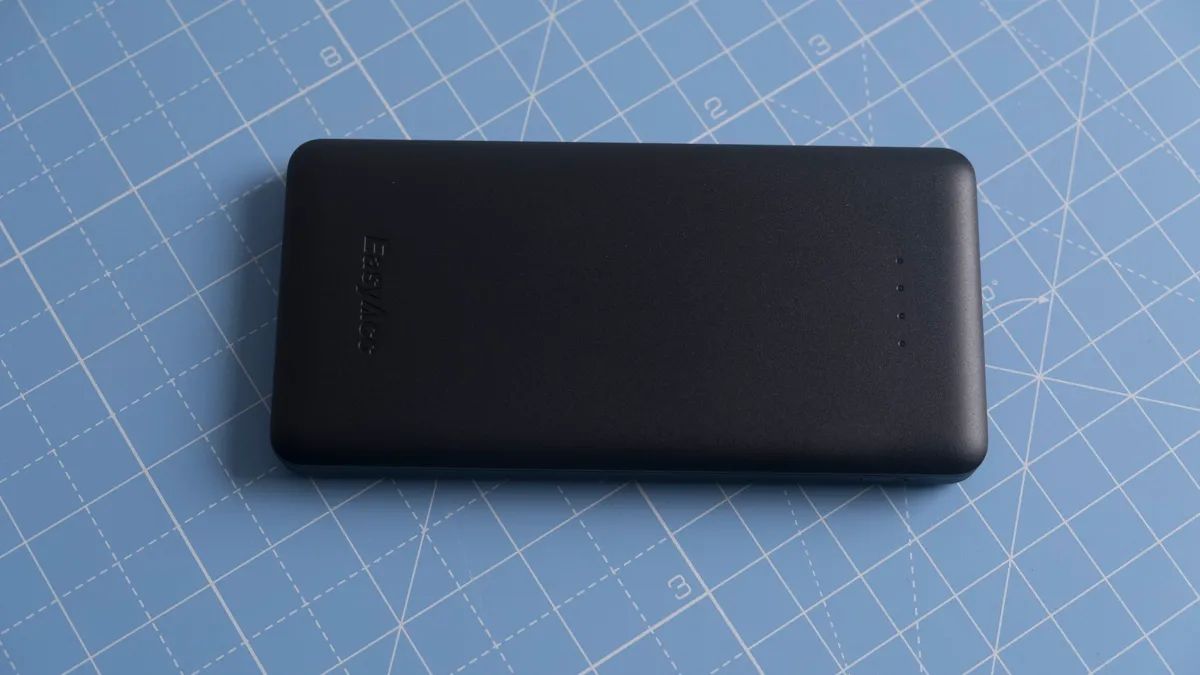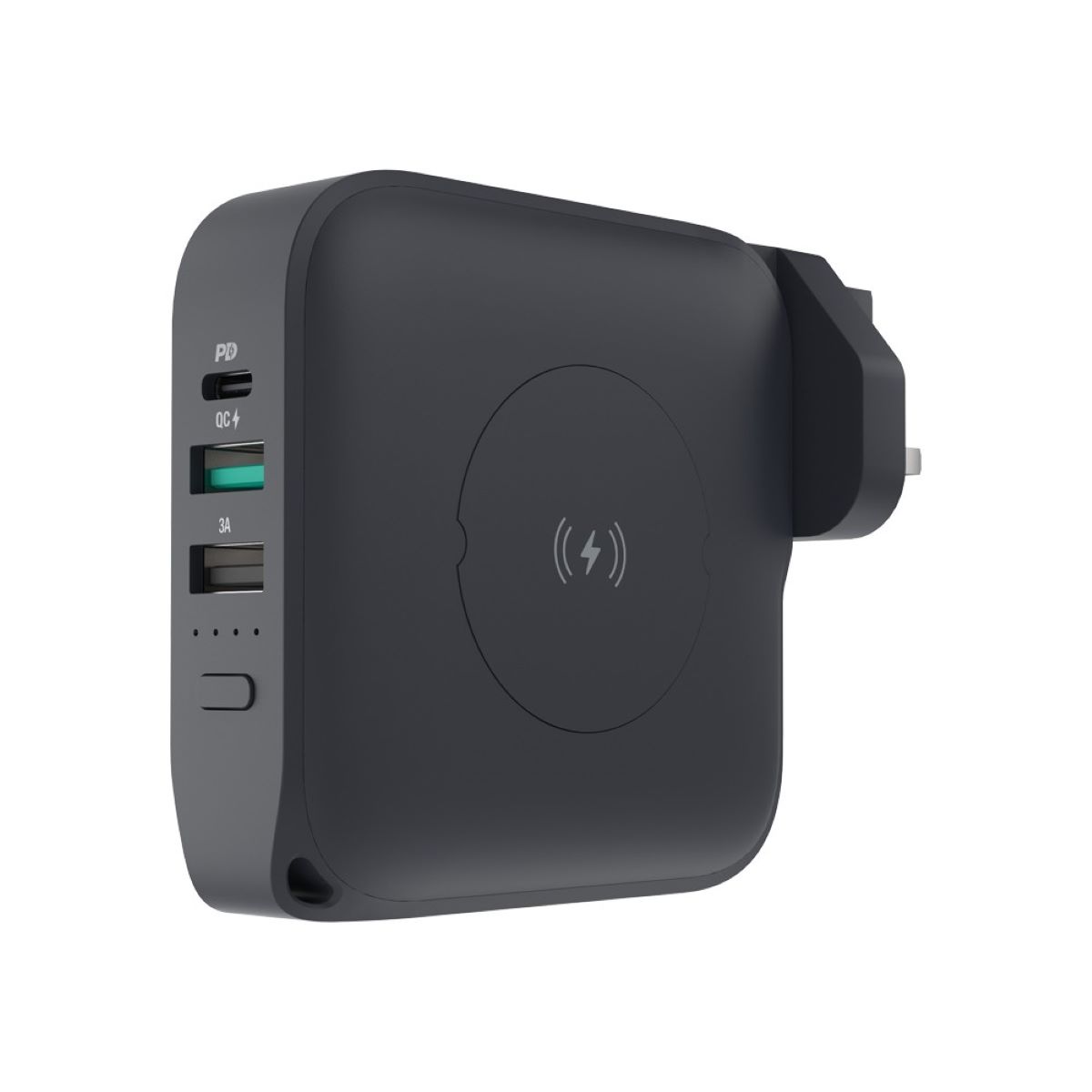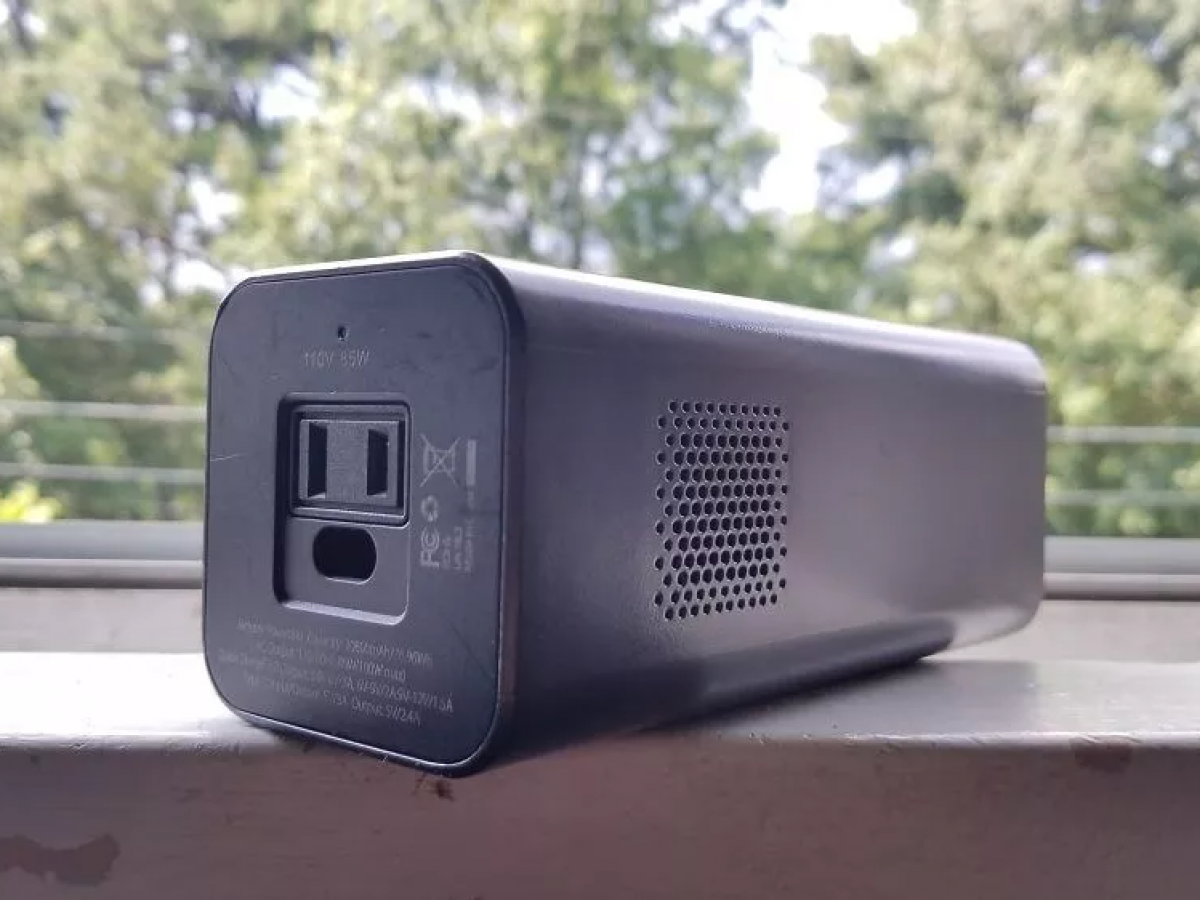Introduction
In today’s fast-paced, tech-driven world, staying connected is more important than ever. Whether you’re traveling, attending meetings, or simply out and about, having a reliable source of power for your devices is essential. This is where a power bank comes in handy. A power bank, also known as a portable charger, is a compact and portable device that allows you to charge your electronic devices on the go.
With the increasing reliance on smartphones, tablets, and other portable gadgets, having a power bank has become a necessity. It provides the convenience of charging your devices anytime, anywhere, without the need for a wall outlet. Power banks have revolutionized the way we stay connected, enabling a whole new level of mobility and freedom.
But have you ever wondered how a power bank actually works? How does it store energy and transfer it to your devices? In this article, we will delve into the intricacies of a power bank and explore the science behind its functionality. By understanding how power banks work, you’ll be better equipped to make informed decisions when choosing the right one for your needs.
What is a Power Bank?
A power bank, also known as a portable charger, is a compact and portable device that stores electrical energy and can be used to recharge other electronic devices such as smartphones, tablets, and cameras. It acts as a portable power source and provides a convenient solution for those moments when you’re unable to access a wall outlet to charge your devices.
Power banks come in various shapes, sizes, and capacities to suit different needs. They are designed to be portable and lightweight, making them easy to carry in your bag, pocket, or even attach to your keychain. Most power banks feature one or more USB ports for connecting and charging your devices.
These handy devices are equipped with built-in batteries that store electrical energy. The capacity of the battery determines how much charge a power bank can hold. The higher the capacity, the more charge it can provide to your devices. Power banks also come with various features such as LED indicators to show the remaining battery life, built-in cables, and even support for fast charging technologies.
The primary function of a power bank is to recharge your devices on the go, allowing you to stay connected during outdoor activities, travel, emergencies, or simply when you’re unable to access a power outlet. It eliminates the need to carry bulky charging adapters or search for power outlets in public spaces.
Power banks have become increasingly popular due to the exponential growth of mobile devices and our dependency on them. With power banks, you no longer have to worry about your smartphone running out of battery during a long journey or your tablet dying during an important presentation. They provide a reliable and convenient solution to keep your devices powered up throughout the day.
How Does a Power Bank Work?
At its core, a power bank works by storing electrical energy in its internal battery and then transferring that stored energy to your mobile devices when you need to charge them. Let’s break down the process step by step:
- Charging the Power Bank: To charge a power bank, you typically need to connect it to a power source, such as a wall outlet or a computer’s USB port, using the provided charging cable. The power bank’s built-in charging circuit regulates the incoming electrical current and voltage to safely charge its internal battery.
- Storing Electrical Energy: As the power bank charges, its internal battery stores electrical energy. The capacity of the power bank’s battery determines how much energy it can store. This capacity is measured in milliampere-hours (mAh) or watt-hours (Wh), which indicates the amount of energy the power bank can deliver to your devices.
- Transferring Energy to Devices: When you connect your electronic device, such as a smartphone or tablet, to the power bank using a USB cable, the power bank’s circuitry detects the connection and initiates the energy transfer process. The power bank converts the stored electrical energy from its battery into the appropriate voltage and current required by your device.
- Charging the Device: Once the power bank has converted the energy, it delivers it to your device, effectively charging its battery. The charging speed depends on several factors, such as the power bank’s output capacity, the charging cable used, and the device’s charging capabilities.
- Power Bank Safety Features: Power banks incorporate various safety features to protect your devices from overcharging, excessive voltage, or short circuits. These safety features ensure that your devices receive a stable and safe charging experience.
It’s important to note that the efficiency of a power bank can vary depending on factors such as the quality of the battery, the charging and discharging circuitry, and even external factors like temperature. Higher-quality power banks tend to have better energy conversion efficiency, resulting in less energy loss during the charging process.
Understanding how a power bank works can help you make informed decisions when choosing the right one for your needs. Consider factors such as the power bank’s capacity, output power, charging speed, and compatibility with your devices to ensure optimal performance and convenience.
Components of a Power Bank
A power bank is made up of several key components that work together to store and deliver electrical energy. Understanding these components can help you better comprehend the inner workings of a power bank. Let’s take a closer look at the main components:
- The Battery: The battery is the heart of a power bank. It stores the electrical energy that is later transferred to your devices. Power banks commonly use lithium-ion (Li-ion) or lithium-polymer (LiPo) batteries due to their high energy density and long lifespan. These batteries are compact, lightweight, and provide a reliable source of power for your devices.
- The Charging Circuit: The charging circuit controls the flow of electricity from the power source, such as a wall outlet or USB port, to the power bank’s battery. It regulates the voltage and current to ensure safe and efficient charging. The charging circuit also includes protection features that prevent overcharging, over-discharging, and short circuits.
- Input and Output Ports: Power banks feature various input and output ports to connect the device to be charged and the power source. The input port, often a micro USB or USB-C port, is used to charge the power bank itself. The output ports, typically USB-A or USB-C ports, are where you connect your devices for charging. Some power banks have multiple output ports, allowing you to charge multiple devices simultaneously.
- Control Circuitry: The control circuitry manages the overall operation of the power bank. It regulates the flow of energy, monitors the battery’s status, and provides the necessary signals for charging and discharging. The control circuitry also ensures that the power bank operates efficiently and safely.
- LED Indicators: Many power banks feature LED indicators that provide visual feedback on the battery’s capacity and charging status. The indicators may display the remaining battery level, the charging progress, or any error or warning notifications. These indicators allow you to monitor the power bank’s status at a glance.
- Design and Casing: The design and casing of a power bank play a crucial role in its overall functionality and portability. Power banks are designed to be compact, lightweight, and easy to carry. They often have a durable casing to protect the internal components from damage and ensure longevity.
By understanding the components of a power bank, you’ll have a better grasp of how it operates and what to look for when choosing one that fits your needs. Consider factors such as the battery type, capacity, number of output ports, and additional features to ensure that the power bank meets your charging requirements and offers a reliable source of power for your devices.
The Battery
The battery is one of the crucial components of a power bank, as it stores the electrical energy that powers your devices. Power banks commonly use lithium-ion (Li-ion) or lithium-polymer (LiPo) batteries, known for their high energy density and reliability. Let’s explore the battery further:
Lithium-Ion (Li-ion) Battery: Li-ion batteries are widely used in power banks due to their excellent energy density, long cycle life, and low self-discharge rate. They consist of multiple cells connected in series or parallel to achieve the desired voltage and capacity. These batteries provide a stable and reliable source of power, allowing your devices to charge efficiently.
Lithium-Polymer (LiPo) Battery: LiPo batteries are a variation of Li-ion batteries and offer similar benefits. They are known for their flexibility in shape and size, allowing power banks to have slimmer and more compact designs. LiPo batteries have a higher energy density compared to traditional Li-ion batteries, making them ideal for portable electronic devices.
Both Li-ion and LiPo batteries utilize a chemical reaction to generate electrical energy. Inside the battery, there are two electrodes, a positive cathode, and a negative anode, separated by a porous material called the separator. Electrolytes facilitate the movement of ions between the electrodes, creating a flow of electricity.
The capacity of a battery is an essential specification to consider when choosing a power bank. It is measured in milliampere-hours (mAh) or watt-hours (Wh) and indicates the amount of electrical energy the battery can store. The higher the capacity, the more charge the power bank can provide to your devices before it needs recharging itself.
It’s important to note that the efficiency and overall performance of a power bank are influenced by the quality of the battery. Higher-quality batteries tend to have better energy conversion rates and can sustain their capacity over a longer period. Consider reputable brands that prioritize the use of high-quality batteries when selecting a power bank.
Additionally, factors such as temperature and usage patterns can impact the lifespan of the battery. Extreme temperatures can affect the battery’s performance and longevity. It’s recommended to use power banks within the specified temperature range to maximize their lifespan.
Understanding the battery technology used in a power bank allows you to make an informed decision when choosing one for your charging needs. Consider the battery type, capacity, and overall quality to ensure that your power bank provides a reliable and efficient source of power for your devices.
The Charging Circuit
The charging circuit is a vital component of a power bank that controls the flow of electricity from the power source to the internal battery. Its main function is to regulate the voltage and current during the charging process, ensuring the power bank is charged safely and efficiently. Let’s explore the charging circuit in more detail:
Regulating Voltage and Current: The charging circuit is responsible for regulating the input voltage and current to the appropriate levels required for charging the power bank’s battery. It ensures that the power source’s voltage is converted to match the battery’s charging voltage, offering a safe and efficient charging process.
Protection Features: The charging circuit includes built-in protection features that safeguard the power bank’s battery and the connected devices. These features prevent overcharging, over-discharging, and short circuits, ensuring the safety of both the power bank and your devices. Protection mechanisms may include voltage regulation, temperature monitoring, and current control.
Charge Control Algorithm: The charging circuit uses a charge control algorithm to manage the charging process effectively. The algorithm determines the optimum charging conditions based on various factors such as battery capacity, temperature, and voltage level. It adjusts the charging parameters accordingly to ensure optimal charging efficiency and battery health.
LED Indicators: Many power banks incorporate LED indicators that provide visual feedback on the charging status. The charging circuit controls these indicators, allowing them to display the current charging progress or the remaining battery capacity. These indicators are a convenient way to monitor the charging status and estimate how much power is left in the power bank.
It’s important to note that the quality and design of the charging circuit can affect the reliability and performance of a power bank. High-quality power banks utilize advanced charging circuitry that maximizes efficiency, minimizes energy loss, and provides a stable charging experience.
When choosing a power bank, consider the charging circuit’s capabilities and safety features. Look for power banks that have undergone thorough testing and comply with industry standards to ensure a reliable and safe charging experience for your devices.
Understanding the charging circuit’s role in a power bank allows you to make an informed decision when selecting a reliable and efficient portable charger. Consider power banks that prioritize high-quality charging circuitry to optimize your charging experience and keep your devices powered up on the go.
Input and Output Ports
Power banks are equipped with input and output ports that allow you to connect them to power sources and charge your devices. These ports play a crucial role in the functionality and versatility of a power bank. Let’s explore the input and output ports in more detail:
Input Ports: The input port of a power bank is used to charge the power bank itself. It is typically a micro USB or USB-C port, although some power banks may use proprietary connectors. The input port connects the power bank to a power source, such as a wall adapter or computer’s USB port, to recharge the power bank’s internal battery.
Output Ports: Power banks feature one or more output ports to connect and charge your devices. The most common output port is a USB-A port, but newer models may also include USB-C ports. These ports allow you to connect your smartphones, tablets, cameras, or other compatible devices using the appropriate charging cables. Some power banks offer multiple output ports, enabling you to charge multiple devices simultaneously.
Output Current and Voltage: The output ports of a power bank deliver electrical energy to your devices in the form of current (measured in amperes) and voltage (measured in volts). The output current determines how quickly your device charges, with higher amperage resulting in faster charging. The voltage must match the device’s charging requirements to ensure compatibility and safe charging.
Fast Charging and Smart Ports: Many power banks now incorporate fast charging technologies, such as Qualcomm Quick Charge or Power Delivery (PD). These technologies enable faster charging for compatible devices by increasing the output current and optimizing the charging efficiency. Some power banks also feature smart ports that automatically detect and adjust the charging current to the connected device’s requirements.
It’s essential to check the specifications of the power bank’s input and output ports to ensure compatibility with your devices. Consider the types of ports provided, the output current and voltage ratings, as well as any fast charging capabilities that align with your device’s charging requirements.
Furthermore, the quality of the ports can impact the overall performance and durability of the power bank. Well-built ports with solid connectors and sturdy build materials offer better longevity and ensure a stable connection during charging.
In summary, the input and output ports of a power bank allow you to charge the power bank itself and connect and charge your devices. Understanding the types of ports, their specifications, and any additional features like fast charging can help you choose a power bank that suits your charging needs and provides a convenient and reliable charging experience for your devices.
Charging a Power Bank
To ensure that your power bank is ready to provide a reliable source of power for your devices, it is important to charge it properly. Here are some essential steps to follow when charging a power bank:
- Use the Correct Charging Cable: Most power banks come with a dedicated charging cable that connects to its input port. Ensure that you use the provided cable or a compatible one to charge the power bank. Using the wrong cable may result in slower charging or even damage to the power bank.
- Choose the Right Power Source: Connect the power bank’s charging cable to a suitable power source. This can be a USB port on your computer, a wall adapter, or a car charger. Make sure to use a reliable and properly rated power source to ensure safe and efficient charging.
- Check the Power Bank’s LED Indicators: Many power banks feature LED indicators that provide information about the charging status. When you plug in the power bank, the LED indicators may light up to indicate that charging has started. These indicators may also show the remaining battery capacity or any error notifications.
- Allow Sufficient Time for Charging: The time it takes to charge a power bank depends on its capacity and the charging speed. Larger capacity power banks naturally take longer to charge. It is recommended to refer to the manufacturer’s guidelines for approximate charging times. Avoid using the power bank while it is charging to ensure faster and more efficient charging.
- Unplug the Power Bank When Fully Charged: Once the power bank is fully charged, it is important to unplug it from the power source. Leaving it connected to the power source for an extended period may generate excessive heat and potentially reduce the overall lifespan of the power bank’s battery.
- Store the Power Bank Safely: After charging, store the power bank in a cool and dry place away from direct sunlight or extreme temperatures. This helps to maintain the battery’s health and prevents any potential damage. Avoid dropping or subjecting the power bank to physical impact, as it can affect the internal components.
Following these steps ensures that your power bank is charged properly and ready to provide a reliable source of power for your devices. Always refer to the manufacturer’s instructions and guidelines specific to your power bank model for the best charging practices.
Remember that each power bank may have its own unique charging requirements and specifications, so understanding your particular power bank’s needs will help maximize its performance and extend its lifespan.
Charging Devices with a Power Bank
A power bank serves as a portable source of energy, allowing you to charge your devices when you’re on the go. Here are the key steps to follow when charging your devices with a power bank:
- Select the Correct Charging Cable: Determine the appropriate charging cable to connect your device to the power bank. Ensure that you use a cable that is compatible with both your device and the power bank’s output port.
- Plug in the Charging Cable: Connect one end of the charging cable to the output port of the power bank and the other end to your device’s charging port. Make sure the connection is secure to establish a stable charging connection.
- Check the Power Bank’s Remaining Capacity: Look at the power bank’s LED indicators or display, if available, to determine its remaining battery capacity. This helps you monitor how much power is available for charging your device.
- Initiate Charging: Once the charging cable is properly connected, the power bank should automatically detect the device and start charging. If not, some power banks require you to press a power button or initiate charging manually.
- Monitor the Charging Progress: Keep an eye on your device’s battery icon or notification for indications that it is charging. You can also check the power bank’s LED indicators to see if they show any charging status, such as flashing lights or a gradual decrease in the remaining battery capacity.
- Allow Sufficient Charging Time: The charging time varies depending on the power bank’s output capability, the capacity of your device’s battery, and the charging cable used. It may take some time to fully charge your device, so be patient and avoid interrupting the charging process.
- Disconnect the Charging Cable: Once your device is fully charged or has reached the desired battery level, disconnect the charging cable from both the power bank and the device. This prevents overcharging and helps conserve the power bank’s remaining battery capacity for future use.
It’s important to note that the charging speed may differ between power banks and devices. Some power banks support fast charging technologies, such as Qualcomm Quick Charge or Power Delivery (PD), which can significantly reduce the charging time for compatible devices.
When using a power bank to charge multiple devices simultaneously, keep in mind the power bank’s output capacity and whether it can handle charging multiple devices at once without compromising the charging speed or efficiency.
By following these steps, you can effectively and conveniently charge your devices with a power bank, ensuring that you stay connected and powered up wherever you go.
Power Bank Capacity and Charging Times
The capacity of a power bank plays a significant role in determining how many times it can charge your devices and how long it takes to recharge the power bank itself. Understanding power bank capacity and charging times can help you choose the right power bank for your needs and manage your charging expectations more effectively.
Power Bank Capacity: Power bank capacity is typically measured in milliampere-hours (mAh) or watt-hours (Wh). Higher capacity power banks can store more energy and provide more charge cycles to your devices before needing to be recharged themselves. When choosing a power bank, consider the capacity that suits your charging requirements. A higher capacity power bank will generally be bulkier and heavier, so it’s important to strike a balance between capacity and portability.
Charging Times for Power Banks: The time it takes to charge a power bank depends on its capacity, the input charging speed, and the power source used. As a general rule of thumb, a power bank with a larger capacity will take longer to charge. For example, a power bank with a capacity of 10,000mAh may take around 4-6 hours to fully charge with a standard wall adapter. However, some power banks support fast charging technologies, which can significantly reduce the charging time. It’s essential to refer to the manufacturer’s specifications for estimated charging times, as they can vary depending on the power bank model.
Charging Times for Devices with a Power Bank: The charging time for your devices connected to a power bank depends on several factors, including the device’s battery capacity, the power bank’s output capability, and the charging cable used. Higher output power banks will generally charge your devices faster. It’s important to note that some devices may have limitations on how quickly they can be charged, even if the power bank provides high output power. Additionally, the charging speed may be affected by factors such as the device’s charging circuitry, usage during charging, and compatibility with fast charging technologies.
Keep in mind that the stated capacity of a power bank may not provide a full charge to your device due to energy losses during the charging process. It’s recommended to consider a power bank with a slightly higher capacity than your device’s battery capacity to ensure a complete charge and some extra power for emergencies.
Ultimately, the charging times for both power banks and devices are influenced by various factors, including the battery capacity, charging technology, power source, and cable quality. Understanding the capacity and charging times can help manage expectations and choose a power bank that best suits your charging needs.
Tips for Using a Power Bank Efficiently
A power bank is a convenient and portable device that keeps your electronic devices charged even when you’re on the move. To make the most of your power bank and enhance its efficiency, consider the following tips:
- Choose the Right Power Bank Capacity: Assess your charging needs and select a power bank with an appropriate capacity. A power bank with a higher capacity will provide more charge cycles to your devices before needing to be recharged itself.
- Consider Fast Charging Capabilities: If your devices support fast charging technologies, opt for a power bank that offers compatible fast charging features. This will allow you to charge your devices more quickly, especially during time-sensitive situations.
- Use High-Quality Charging Cables: Ensure that you use high-quality charging cables that are compatible with your devices. Poor-quality cables can lead to slower charging speeds or even damage your devices or power bank.
- Keep the Power Bank Clean and Dust-Free: Regularly clean your power bank using a soft cloth to remove dust, debris, or dirt. This helps maintain the efficiency of the power bank’s ports and prevents any charging issues caused by dirt accumulation.
- Avoid High Temperatures: Heat can negatively impact the performance and longevity of both power banks and devices. Avoid exposing your power bank to direct sunlight or extreme temperatures, as excessive heat can degrade the battery capacity.
- Use Power-Saving Modes on Devices: Enable power-saving modes on your devices to minimize energy consumption while charging. This can help maximize the usage of the power bank’s stored energy and prolong the charging cycles.
- Charge Devices in Priority Order: When charging multiple devices with a power bank, prioritize the devices that require immediate charging. This allows you to optimize the power bank’s capacity and ensure that critical devices are fully charged.
- Regularly Recharge the Power Bank: Don’t wait until the power bank is fully drained before recharging it. Regularly recharge the power bank to maintain its battery health and ensure it is always ready for use.
- Store the Power Bank Properly: When not in use, store the power bank in a cool, dry place away from direct sunlight and extreme temperatures. This helps preserve the battery life and overall performance of the power bank.
- Read the User Manual: Familiarize yourself with the specific instructions and guidelines provided by the manufacturer. Each power bank may have its own unique features and charging considerations, so it’s important to follow the instructions for optimal usage.
By following these tips, you can make the most of your power bank’s capabilities, ensure efficient charging of your devices, and extend the overall lifespan of your power bank.
Conclusion
A power bank is a versatile and indispensable device that provides a portable source of power for our increasingly mobile lifestyles. It allows us to stay connected and keep our devices powered up, whether we’re traveling, working, or simply on the go. Understanding how a power bank works and utilizing it efficiently can greatly enhance our charging experience and ensure optimal performance.
We explored the components of a power bank, including the battery, charging circuit, and input/output ports. By delving into these components, we gained a better understanding of the inner workings of a power bank and how it stores and transfers electrical energy to charge our devices.
We also learned about the importance of power bank capacity and how it impacts the number of charge cycles and charging times. Considering the capacity and matching it with our charging requirements allows us to choose the right power bank for our needs and avoid running out of power at critical moments.
With the tips for using a power bank efficiently, we can maximize its capabilities and keep our devices charged without compromising on safety or battery health. From choosing the right cables and power sources to practicing good maintenance and storage habits, these tips help us make the most of our power banks and ensure a reliable and convenient charging experience.
In conclusion, power banks have become an essential companion for our modern lifestyle, offering a portable and convenient solution to keep our devices powered up. By understanding how they work, utilizing them efficiently, and considering the specific needs of our devices, we can ensure that we stay connected, productive, and powered on the go.







